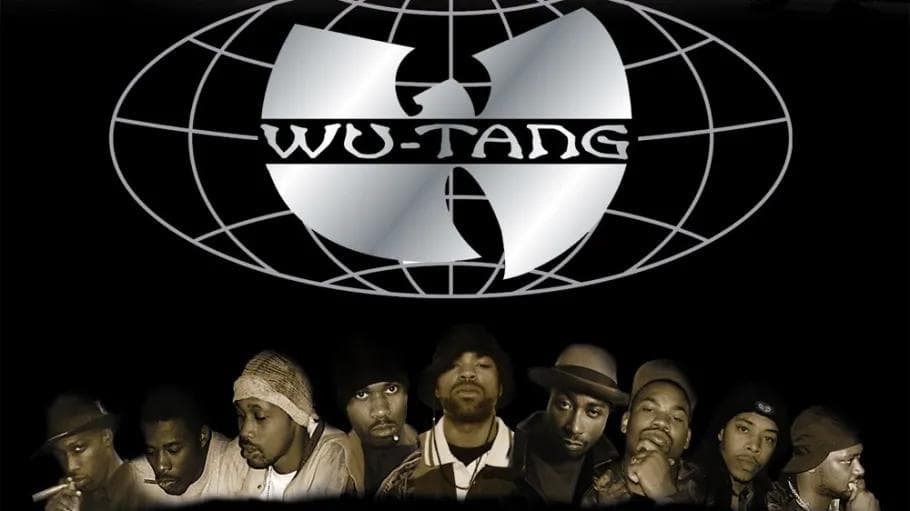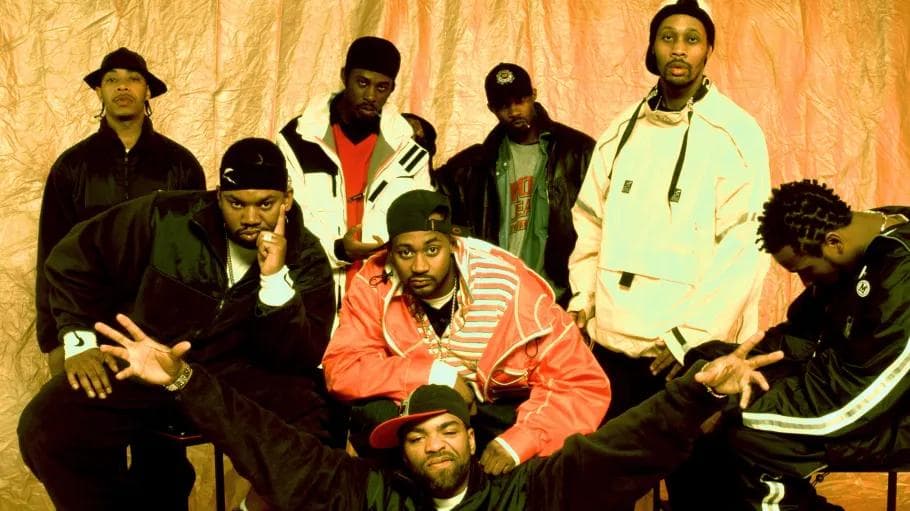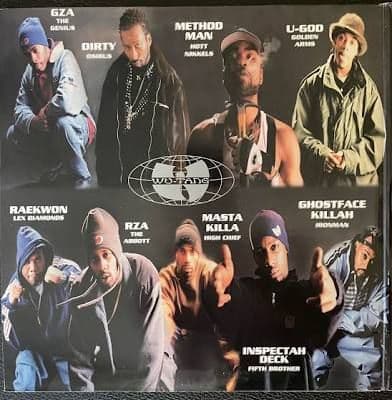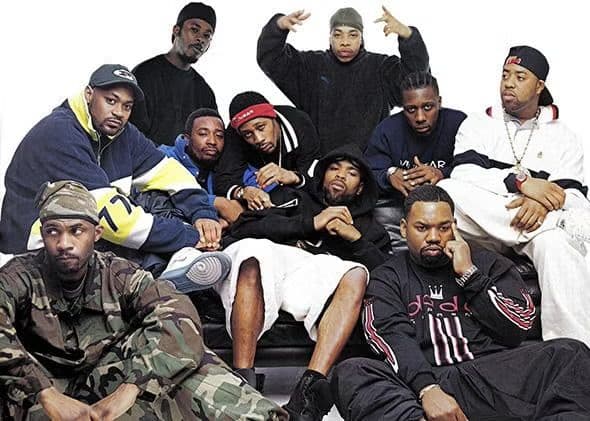2025-04-14
Why Wu-Tang Forever is the Best Double Album
By Jamil Weeks

The year was 1997. Decadence in rap music reached new heights as the content of rap artists increasingly shifted towards materialistic themes. Rappers went from chugging 40 ounces dressed in Karl Kani to sipping Cristal draped in Versace. In the aftermath of the East/West feud, Bad Boy emerged from the aftermath flooding the streets with music produced by Puffy and the Hitmen. With Bad Boy churning out hit records that climbed the charts in ‘97, their brand of rap music was dubbed “the shiny suit era”. Biggie’s Life After Death, as well as All Eyez On Me from former friend, 2Pac, became the standard for double album excellence. Both albums have been recognized by the hip hop community as being the best rap double albums since their releases. However, there would be another double album more worthy of that designation that would debut in the summer of 1997. Swarming the rap industry with killer bee stings for shiny suit rappers was the Brooklyn/Staten Island collective known as Wu Tang Clan with the release of their second album, Wu Tang Forever. The yin to Bad Boy’s yang, Wu Tang Forever countered the shiny suit era with a sound so dirty you needed a shower after listening. Despite having almost no radio-friendly songs, the Wu dropped one of the biggest albums of ‘97. Wu Tang Forever was loaded with so much heat, there is a valid argument to make that is the true album to sit atop the rap double album throne.

After their classic debut that shook up the genre, Clan members embarked on their own solo missions with the music. Fans familiarized themselves with individual group members with their solo albums as Rza’s sword sharpened behind the boards. The Wu Tang movement strengthened with classic offerings like Iron Man, Liquid Swords, and Only Built 4 Cuban Linx. With the industry shifting to a more commercial sound, Wu Tang would form like Voltron to balance the scales. The Clan was beginning to build a brand with the debut of Wu Wear in ‘95. Stars from the group were rising with the careers of Method Man, Raekwon, Ghostface, Ol Dirty Bastard, Gza, and Rza. The Wu gained a cult following of loyal fans that increasingly grew from ‘93 going into ‘97. The crew was riding a wave of momentum for their anticipated second album.
”Reunited! Double LP, world excited” - Gza
Before the digital era, you had no choice but to cop the cassette or CD at a records store. I remember camping out at the local Paradise Records parking lot for the midnight release of Wu Tang Forever. As I waited in line that stretched outside to get into the store, people who were first in line drove out of the parking lot blasting cute from the album, like “Reunited”. Wu had created an album that could legitimately compete with AEOM and LAD. WTF was different though. While the Pac and Biggie’s double LPs embraced a more polished, commercial sound, WTF stick to the script was forged with Enter the Wu: 36 Chambers. A sound that captured the raw streets in a witty and unpredictable manner. By now Rza and Wu-Tang Productions, consisting of 4th Disciple, Allah Mathematics, and True Master, were at their peak with their mixture of boom bap and kung fu movie samples. WTF was an anomaly with the Wu deviating from the commercial direction hip hop was heading in. Even though the music was mixed better than their debut, Rza made sure to maintain their trademark dusty brand of rap catering to their day one fans. Rza and company blacked out on the production, lacing the Wu members with bangers on almost every song on the double LP. The beats were so infectious the album should have come with complimentary neck braces from all the head nodding the album inspired. Rza had solidified himself as one of rap’s top producers with WTF, placing him in the same company as Dr. Dre, DJ Premier, Havoc, Pete Rock, and Q-Tip.

WTF was the album that solidified Wu Tang as icons in rap. By the end of ‘97, Wu’s fanbase went from a cult following in hip hop to their emblem being recognized globally. While Puffy was producing hit records all throughout ‘97, Wu Tang managed to sell 6 million albums worldwide, with four million sold in the United States alone. WTF remains the most successful album from the group. The Wu were champions of the underground and “real hip hop”. The album marked the culmination of Rza’s brilliant five year plan, where the group signed to Loud Records as a group and then signed solo deals with the record label of their choosing. Included in that plan was carefully managing the careers of the different Wu members. Each member gained their own fans, attracting different audiences. These different audiences helped the Wu gain the number one spot when their sophomore album was released. Ghost and Rae had the streets on lock. Gza had the more intellectual college crowd. Meth was the star bringing in the women and children. Rza has found a way to play to each member’s strengths in managing their individual styles when considering their target audiences. In that regard, WTF was much different than other double albums since it was an album five years in the making, requiring meticulous planning and group management. The solo albums set up their second album in the same way the Marvel Cinematic Universe’s solo movies set up the Avengers films. Wu Tang was able to be themselves instead of catering to the radio or clubs.
With Wu Tang having nine members (10 if you count Cappadonna), the Wu further separated themselves from the rest of the pack with their intricate lyricism. The album was praised for its storytelling depicting the harsh realities of inner city life for black youth. While the typical subject matter of that time includes rappers boasting of expensive designer clothes, jewelry, champagne, and foreign cars, Wu Tang showed rappers how to be successful while not forgetting where they came from. They represented emcees with their own unique individual style becoming masters of their craft in the same way 2Pac and Big did on their double albums. Wu Tang figured out how to blend their different skill sets in the studio, making each track more meaningful and impactful. As the listener, you get taken on a journey through the seedy slums of Medina and Shaolin. WTF allowed Wu Tang to spread their street knowledge gospel across the planet. Just like Rza’s production, the crew had sharpened their swords with the bars. Each group member took their lyricism to the next level as they sparred in each studio session. The end result is a double album of bar seminars, where the Wu weaved together intricate hood tales with their marvelous slang and raw street subject matter. With such an incredible display of lyricism, WTF would inspire future generations of lyricists to not compromise their integrity for the sake of the business.

WTF was a moment in hip hop. A rare instance when the art and the business merge organically to create a masterpiece. An album that represents growth. Where you witness your favorite artists at their peak in production and lyricism. AEOM was a collection of Death Row’s best songs given to a generational talent in 2Pac. LAD was Biggie’s competitive response to AEOM. WTF was Wu Tang on a holy mission to rescue hip hop from the shiny suits to keep the streets bubbling. A piece of timeless art showing artists you can still be successful while creating music that comes from an authentic place. WTF sounds as good in 2025 as it did in 1997. Very rarely do you see a lyrically-driven pure hip hop album so critically and commercially successful. Rza’s careful planning along with the individual group members’ execution of that plan with their solo careers while waving that Wu flag set up the Clan as a super group of stars on a mission to save hip hop. The impact of this album can be measured in the crews that Wu Tang inspired with their business model, rather it be Dip Set, Odd Future, or Brockhampton. Or the way the group’s reach extended outside of hip hop, penetrating pop culture and politics. When it comes to ranking the best double albums, WTF should definitely be in the conversation as the greatest double LP. No album in hip hop has given you two albums worth of gimmick-free, raw street raps with virtually no skips. With themes of resilience and unity, the Clan delivered an album that will continue to influence the culture and beyond forever.